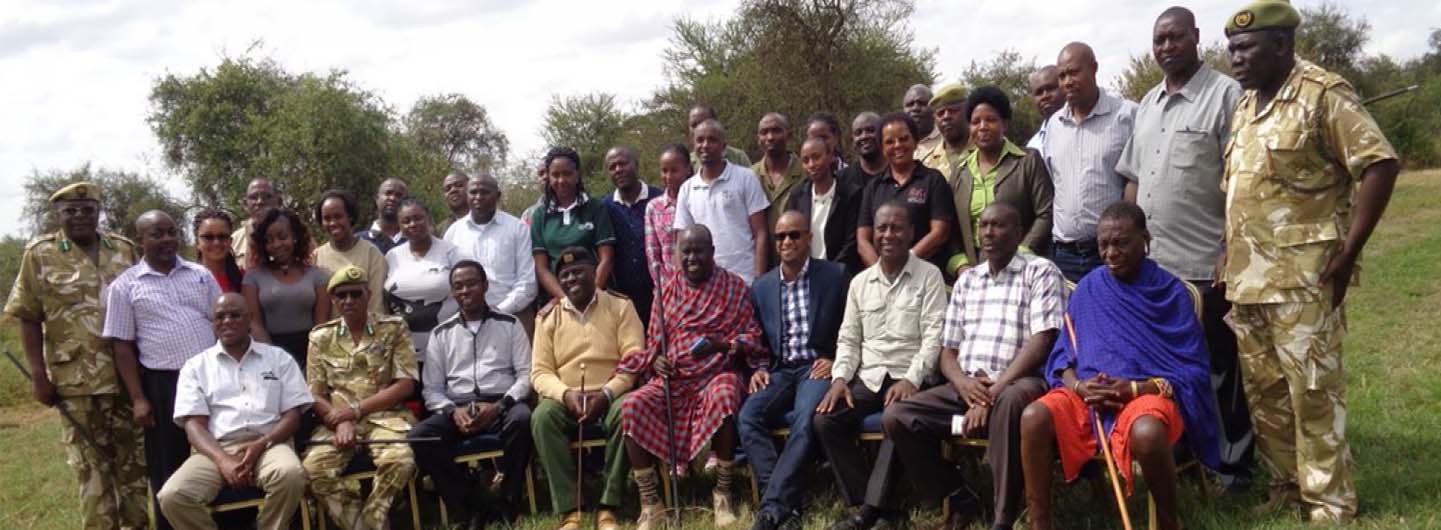Resolutions and Decisions

UN Decisions establishing the AEF
At the 14th meeting of the Conference of the Parties to CITES (the United Nations Convention on International Trade in Endangered Species of Wild Fauna and Flora), the Parties adopted Decisions 14.75 to 14.79 regarding the African elephant (Loxodonta africana).
These Decisions were developed following extensive dialogue and, ultimately, in recognition of the fact that many of Africa’s elephants are under threat and require co-ordinated and immediate action to provide effective protection of remaining elephant populations.
Decision 14.75
Directed to African elephant range States
The African elephant range States shall continue their constructive elephant dialogue aiming to develop joint conservation policies and exchange of management experience to improve the management of elephant populations.
The African elephant range States through the African elephant dialogue process shall develop an overall African elephant action plan for improved elephant management aiming at:
- accessing and directing resources, towards strengthening enforcement capacity in African elephant range States to combat poaching and illegal trade in ivory;
- the implementation of the Action plan for the control of trade in elephant ivory; and
- enhancing capacity building, managing translocations, reducing human-elephant conflicts and enhancing community-conservation programmes and development programmes within or adjacent to the elephant range.
The elephant range States will report to the Standing Committee on progress made under this decision with a view to providing the information necessary for the reviews referred to in Decision 14.78.
The African Elephant Action Plan was adopted by the range States in the margins of the CITES COP15 meeting held in Doha, Qatar in 2010 (CITES COP15 Inf. 68).
Decision 14.76
Directed to Parties, intergovernmental organizations and non-governmental organizations
Parties, trading countries, the ivory carving industry, intergovernmental organizations, non-governmental organizations and other donors are called upon to contribute significantly to the African Elephant Fund for the implementation of the African elephant action plan and the programme for Monitoring the Illegal Killing of Elephants (MIKE) to ensure their establishment and maintenance.
Request to support the implementation of the African Elephant Action Plan and the African Elephant Fund was further reiterated through CITES Resolution Conf. 16.9.
The revised African Elephant Action Plan (2023) was recognized during the CITES Standing Committee Meeting held in November 2023 (SC77 Inf. 3).
Decision 14.77
Directed to the Standing Committee
The Standing Committee, assisted by the Secretariat, shall propose for approval at the latest at the 16th meeting of the Conference of the Parties a decision making mechanism for a process of trade in ivory under the auspices of the Conference of the Parties.
Decision 14.78
Directed to the Standing Committee
14.78 The Standing Committee shall conduct ongoing comprehensive reviews of the status of the elephant, trade in its specimens and the impact of the legal trade, based on data from MIKE, the Elephant Trade Information System and the implementation of the Action plan for the control of trade in elephant ivory and the African elephant action plan referred to in Decision 14.75.
Decision 14.79
Directed to the Secretariat
The Secretariat shall establish an African Elephant Fund that will be applied to the implementation of the African Elephant Action Plan.
The Secretariat shall establish a steering committee consisting of representatives of the range States and donors to govern the African Elephant Fund and to support and advise African elephant range States on the implementation of the Action Plan. The Steering Committee shall decide on the organization of the administration of the fund.
CMS resolution 12.19
The Twelfth Session of the Conference of the Parties to the Convention on the Conservation of Migratory Species of Wild Animals (CMS COP12) held in Manila, the Philippines, from 23 to 28 October 2017 endorsed the African Elephant Action Plan as the principal strategy for elephant conservation under CMS, as contained in CMS Resolution 12.19.
The rationale for doing so was that African elephants have been listed on CMS Appendix II since 1979 but that no strategy document existed under CMS to conserve the African elephant since 2014. Given that the African Elephant Action Plan addresses all of the objectives of CMS and had been agreed by all 37 African elephant range States already in the margins of CITES, it was considered naturally for CMS COP to also endorse it as principal strategy document to follow. Apart from avoiding duplication, the endorsement of the AEAP by CMS COP also allows CITES and CMS to support African elephant range States complementarily with their conservation of elephants.
The amendment to Resolution 12.19 (Resolution 12.19 (Rev.COP14)) on the endorsement of the revised African Elephant Action Plan (2023) was adopted by the Parties during the CMS COP14 meeting held in February 2024 in Samarkand, Uzbekistan.
